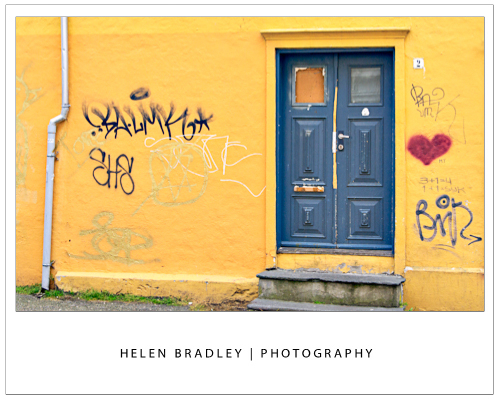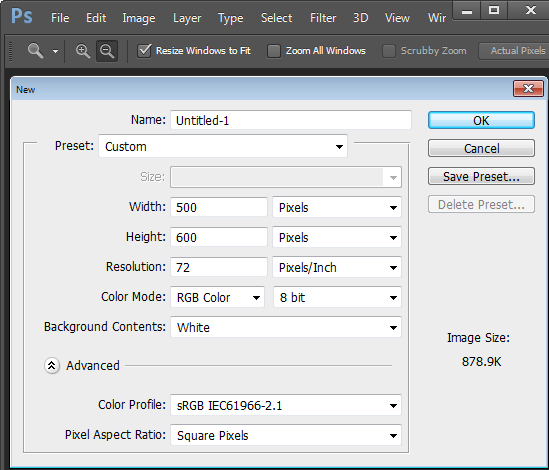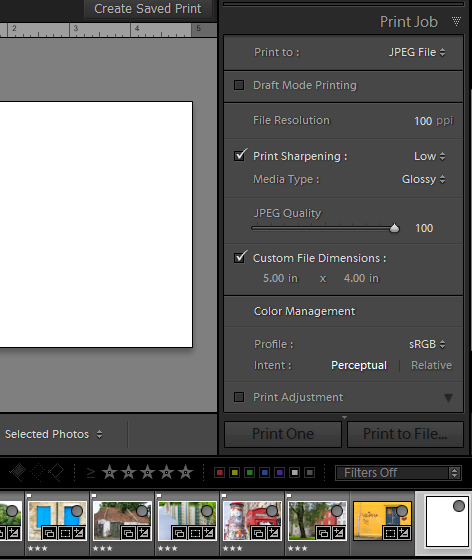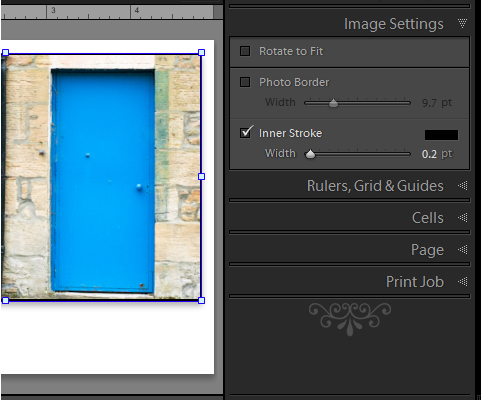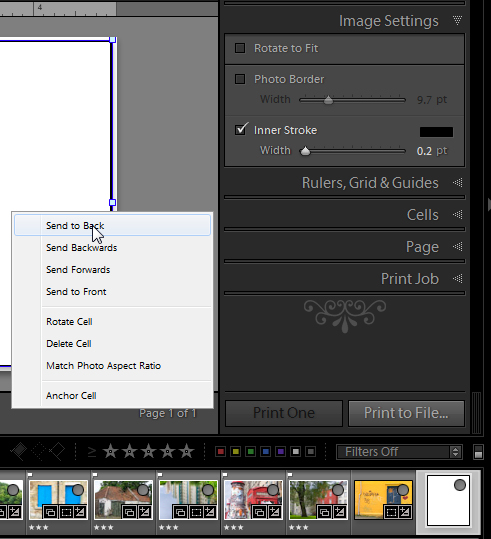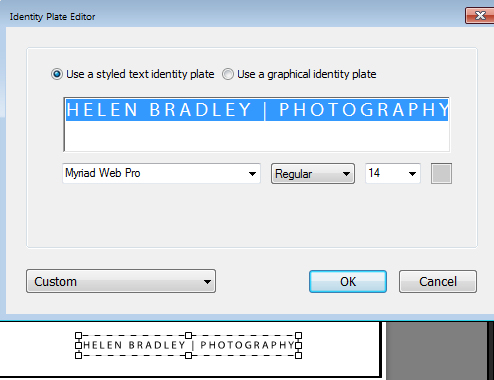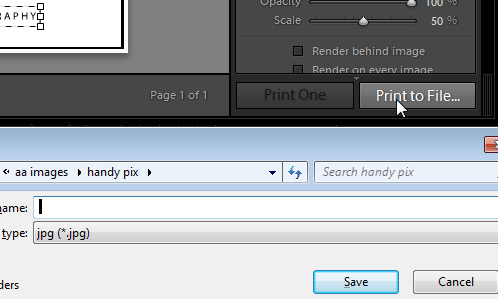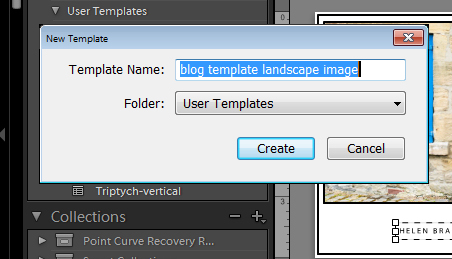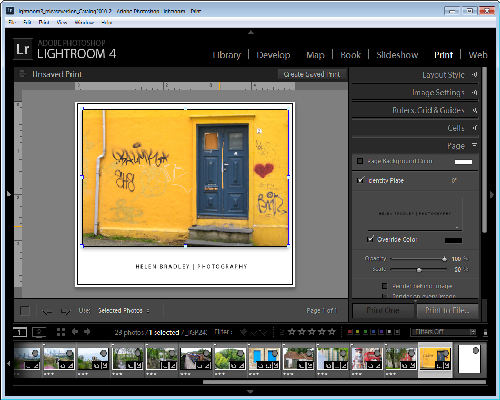Learn how to create an oval frame effect in Photoshop. This video includes how to use a clipping mask, sample a color from an image, make a leaf brush, paint multi-color leaves on an image, add a stroke border to the oval frame and even change its color. This is a jam packed tutorial suitable for a competent beginner or intermediate level Photoshop user.
Transcript:
Hello, I’m Helen Bradley. Welcome to this video tutorial. In this tutorial I’m going to show you how you can make an oval framed photo effect in Photoshop. Before we get started doing this effect let’s have a look and see what it is that we’re aiming for.
What I’m going to do is take this image here and frame it inside an oval frame. And we’re going to add a little border stroke around the frame and then add these decorative elements. The colors for each of these elements is going to be sampled from the image and this is just a single brush that paints in different colors. So if you’re ready let’s get started with this tutorial. So if you’re ready let’s get started with this tutorial.
I’m going to begin here with a new image so I’ll click File, New and I’m just going to do an 11 by 8-1/2 letter size image. But you can make yours whatever size that you like. And here’s my image.
I’m going to center the oval so I’m going to start with a couple of guides. I want a 50 percent guide horizontal and a 50 percent vertical. It’s just a little bit easier to do this with guides. Then I’m going to target my marquee tool. I want the elliptical marquee tool. It shares a toolbar position with the rectangular marquee. But it’s the elliptical marquee that you want. I’m going to hold my mouse pointer over the intersection of these two gridlines and then hold Alt down as I drag out to create my oval. This creates an oval that’s centered over those lines. Of course if I add a Shift key at this point I’ll have everything constrained to a perfect circle centered on this document. But I want an oval so I’m going to let go of the Shift key but make sure that I keep the Alt key held down until I’ve finish drawing my shape. I’ll let go the left mouse button and then let go of the Alt key. This is my shape.
I’ll need a new layer so I’ll click the New Layer icon here and I’m going to fill this with black. So I’m just going to set black as my foreground color and Alt Backspace, Option Delete on the Mac. You can fill it with any color at all but I’m just using black. Now I can get rid of my guide so I’m going to click View and I’m going to clear my guides. I’m going to bring in my image here so I’m just going to drag on the background layer and just add it to this image. Now I want it centered so I’m going to press the Shift key as I center it over this image. I can now close this because I don’t need it any longer. I have my oval still selected. You can probably just see the marching ants there. Now that’s going to get in the way when I start to resize and move this image so I’m going to press Ctrl or Command D to deselect the marching ants. Now I’m going to target my move tool, Ctrl T, Ctrl 0 so I can see my handles. I’m just going to drag everything into position. I’m going to use the Shift key with that corner handle because that will drag everything in proportion. I’m now going to create a clipping mask.
So with this layer selected, Layer, Create Clipping Mask. Now I need to select that checkmark before I can do that so let’s create the clipping mask. And now let’s just fine- tune this image. And I think that’s a pretty good position for it. Now I want to focus on the background layer because I want to sample one of the colors from this image for the background layer. Now the image that we saw had a background which was sampled from the image. So I’m going to target the eyedropper tool here and I’m just going to target this little girl’s dress to get a color from her dress. And when I do you can see that the color is in the top of the ring here. That’s the one I’m going to select. And I have a 3 by 3 average so I’m averaging out the colors under the cursor. So I could go for a slightly lighter blue if I wanted. Let’s select that. And now with the background layer selected I’m going to Alt Backspace, Option Delete to add that color. Now let’s go and add a border around this oval. And to do that I’m going to need to reselect the oval. So I’m going to target the oval shape here, click on the magic wand tool here, it shares a toolbar position with the quick selection tool, but we want the magic wand. We want to make sure that Contiguous is selected. And now I’m just going to click here on this underlying shape which is this black shape here and that gives me this selection.
I’m going to add a new layer so I’m just going to make sure that my new layer goes in at the top and it’s not part of this clipping group. If it were I would have to right click it and choose Release Clipping Mask but it’s now not part of that group. You could see that the marching ants are in position so what we need to do now is to select the color to use. So again I’m going to use the eyedropper and I’m going to select a greeny color from the grass in the background here. So we’ll select that, Edit, Stroke. And you’ll need to experiment a bit with the stroke to see what works best with your image. But I found that a 20 pixel stroke on this particular image is pretty good so I’m just going to settle for a 20 pixel stroke. And I’m doing it over the center and I’ll click Ok. And there’s my stroke. To deselect the marching ants Ctrl or Command D. Now we’re in a position to brush on some leaves around the edge of this image. But to do so we’re going to need to create a brush first up. So let’s go and create a brush. If you’ve already created a brush or you have a brush that you want to use you can skip this step but I’m just going to show you quickly how I created my brush.
I’ll choose File, New and just click Ok. I just need any old document here. I’m going to select the custom shape tool here. It shares a toolbar position with the rectangle tool and these other tools. But it’s custom shape that I want. From the options here on the toolbar I want to select Pixels and I’m going to select black and white as my colors. In earlier versions of Photoshop you’ll still have these three options but they’re going to be side by side here. You just want to make sure that you select the fill pixels or the pixels option. Here I’m going to select a shape which is a leaf shape.
Now last time I selected this shape so let’s make a different shape this time. I’m going to select this one here and then I’m going to drag to draw it on the image. And I’m going to hold the Shift key down as I did so it’s constrained to a nice proportion. Now all I need do is to select Edit and then Define Brush Preset. And I’m going to call this leaf and click Ok. And that is now that shape is now saved as a brush so I can just discard this image. I don’t need it any longer. Now I can go and select my brush. So I’m going to target the brush tool and from the brush dropdown list here I’m going to select my brush. And my brush is always going to be the very, very last one in this brushes palette if I’ve just created it. So this is my brush.
I’m just going to click to select it and then just click outside here to hide that window. Now you can see that the brush is huge and way, way too big right now. So I’m just going to press the square bracket key, the opening square bracket key, to just size it down to size. Now if I start painting I’m first of all going to add a new layer and I’m going to just sample a color from this image. So let’s sample this orange color and let’s just see what happens if I start to paint. Well it’s not looking anything like what it is that we want it to look like. So I’m just going to Ctrl Z to get out of there and let’s go and set up our brush so it paints a little bit more intelligently. I’m going to click here to open the brush panel.
Now in the brush panel here the first thing I want to do is go to brush tip shape, tap on it and I’m going to increase the spacing because I want this brush to be spaced out quite a bit. I could change the size at this point if I wanted to but I’ve already measured this and it’s a pretty good size so I’m going to leave that. I’m going to enable Shape Dynamics and click on Shape Dynamics. Now I want the size to vary a little bit so I’m going to adjust the size jitter. That will make it size in different size brushes as I paint. And I’m also going to adjust the angle jitter. Now I can adjust it to quite a high value here because I don’t mind if these leaves point in completely the opposite direction. In fact that’s going to look pretty good for my leaves. And then I’m going to tap Scattering to enable that and to go to get the Scattering controls. I’ve got Scattering enabled here on both axes and I can just pull it out or push it in to see what I’ve got. I think I want a little bit better control than adjusting count because this is going to give me way too many leaves so I think I’d rather paint more and have less of a count. So I think that’s going to be pretty good.
The last thing I need to do is to enable Color Dynamics. What I want with Color Dynamics is I’d really like this brush to do all the work for me and I want it to paint in color. So I’ve got orange as my background color. Now I’m going to tap here and I’m going to select a color from the image to be the foreground color. So I’m thinking sort of a lighter yellow, maybe I’ll just pick it up from the palette here. So this is my foreground color. This is my background color and I have Apply per Tip enabled and foreground, background jitter at 100 percent. I’ve got hue jitter, saturation jitter and brightness jitter all at zero percent and purity at zero percent as well. What this brush is going to do is it’s going to toggle its colors between these two and so I won’t have to do any of the work myself. I’m going to close this dialog, make sure that I’m painting on a brand new layer, and I’m just going to start to paint. And you can see that the colors are toggling between the foreground and background color. And that just lets me paint my autumn leaves without having to do really much work at all.
Now I can paint as much or as little of these leaves as I want. I’m painting over the edge a little bit here because I’d like some leaves to be eventually underneath this stroke border so I’m just going to add plenty of leaves in there. And I’ll add a couple of stray leaves in the bottom here as well. I can add them by just single tapping or I can paint. When I’m happy with that the last thing I need to do is to get rid of the leaves that are actually over the image here. So I’m going back to my magic wand tool and I’m going back to my stroke layer here and with Contiguous enabled I’m just going to click inside this stroke layer. And what that does is it selects everything inside that layer. And now I can come onto my paint layer and I could do one of two things. I could just press Delete to delete the leaves that are inside this shape but perhaps if I wanted to add some more leaves later on it would be a better idea if I actually added a mask. And that’s very easy to do.
I’m just going to click here the Add Layer Mask icon. Now when I add my layer mask it’s working the wrong way around. You can see what it’s done is it’s clipped and hidden all the leaves around the outside and just left the ones in the middle. We want the exact opposite to be the case so I’ll click on my mask and press Ctrl and I and that just inverts the mask. So you can see now we’ve got the leaves on our image and they’re all around the edge of the image. It’s just that the stroke is underneath the leaves. There’s a very, very easy solution to that. I’m going to select the layer that contains the stroke and just move it up above the leaves and now the stroke is over the leaves. Before we leave this tutorial let’s have a look and see what would happen if we decided that instead of this green edge we would like a pink edge perhaps sampling the pink from this little girl’s headband. Well let’s go first of all and sample the pink. And this is the pink that I’m going to use so I have it selected as the foreground color. I want to make this stroke which is now green into pink.
Now if I press Alt Backspace I’m just going to make the whole layer pink and that’s not what I want to do. I just want to fill the pixels that are already filled on that layer. So I can click here to lock the transparent pixels on this layer, looking for this lock icon to appear. Now if I press Alt Backspace I’m just going to change the color of that stroke. And it’s picked up the foreground color in the image. And now I would just either drag this lock icon into the trash can here or I can just click this icon again. That would unlock it. So there you have an oval framed effect with some autumn leaves that you’ve created using a brush of your own in Photoshop.
I’m Helen Bradley. Thank you for joining me for this video tutorial. Look out for more of my video tutorials on this YouTube channel and visit projectwoman.com for more tips, tricks and tutorials on Illustrator, Photoshop, Photoshop Elements, Lightroom and a whole lot more.


